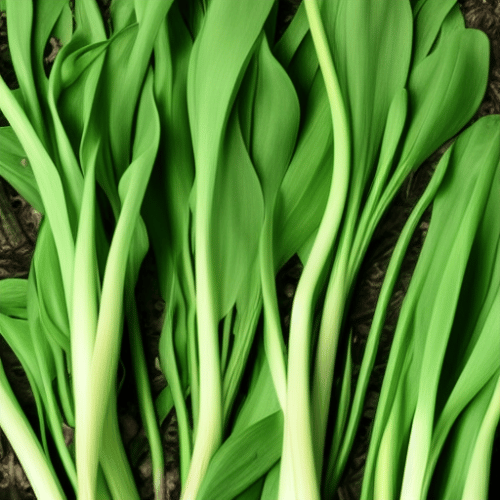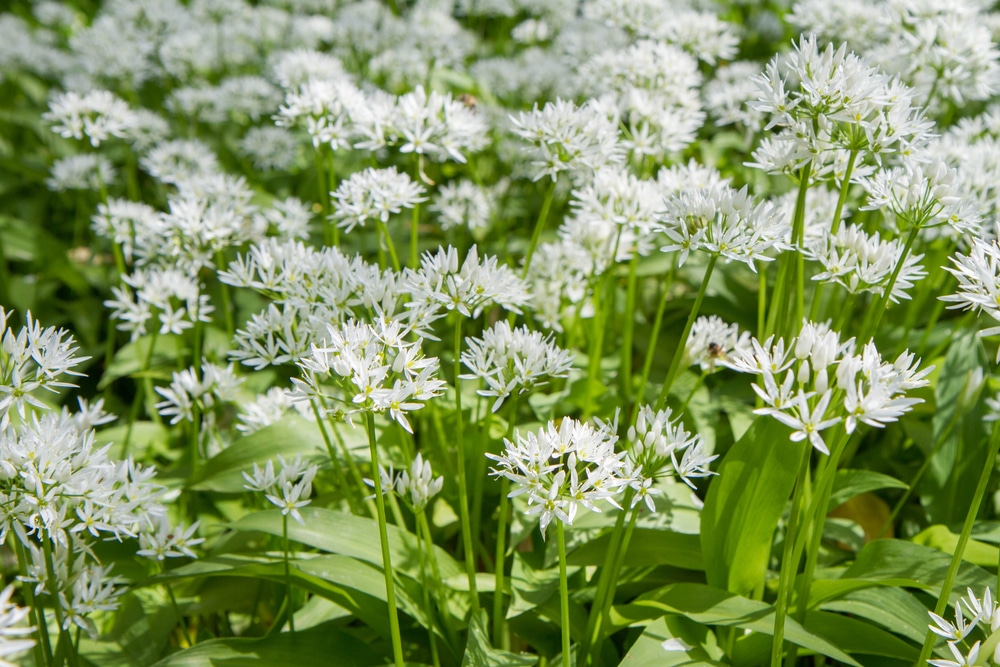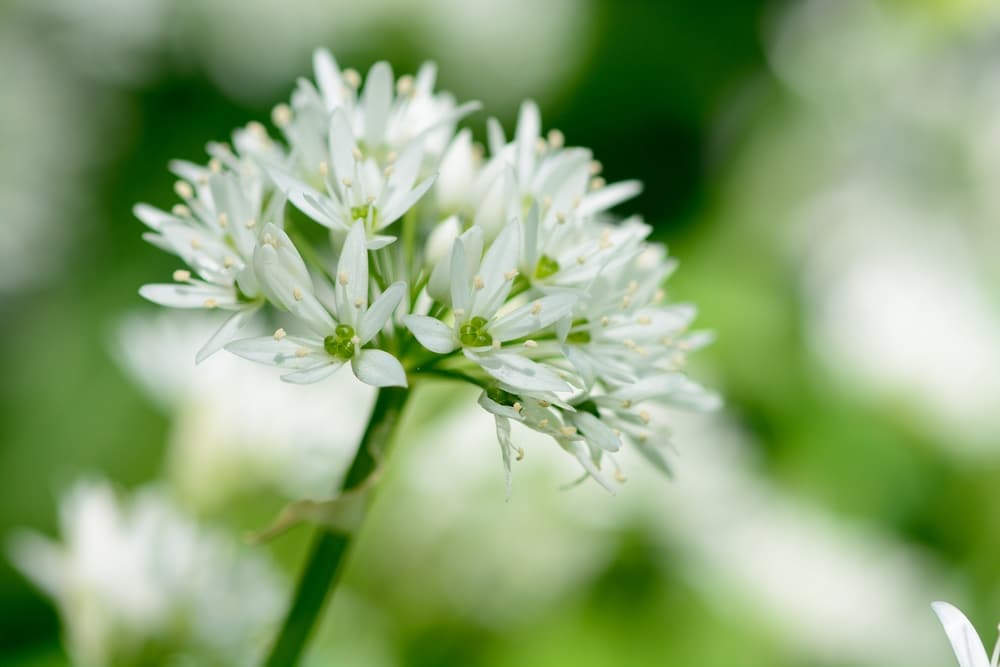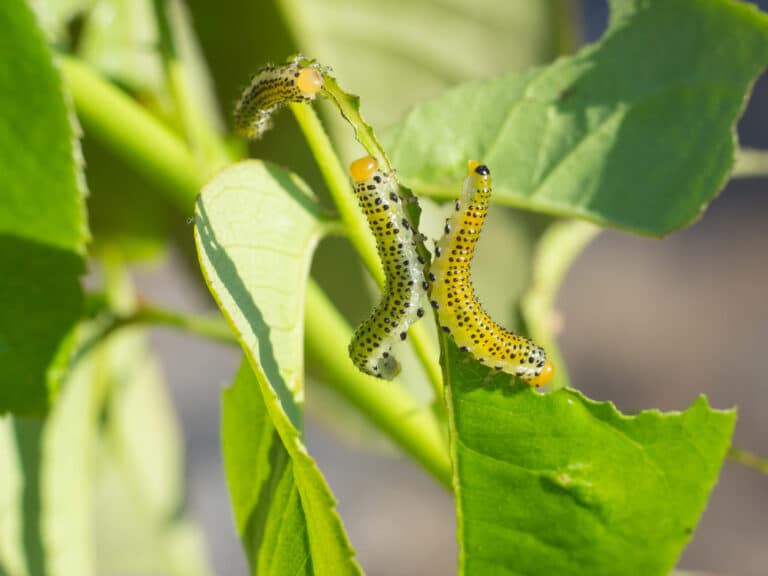Ramsons, also known as wild garlic, are abundant plants that provide numerous health benefits as well as taste great. If you enjoy spring walks in the woodlands, foraging for ramsons is a popular pastime that can also be used to help elevate your cuisine.
Overview
- Scientific Name: Allium ursinum
- Common Name/s: ramsons, wild garlic, broad-leaved garlic, wood garlic, bear’s garlic
- Family: Amaryllidaceae
- Origin: native
- Habitat: woodlands
- Flowering months: April to June
Where Can You Find Ramsons?
Ramsons are mostly found in woodland areas, where they have a particularly strong preference for damp ground. Like bluebells, they prefer slightly acidic soils, so if you have a local bluebell colony thriving in the woods, there’s a good chance there will also be some wild garlic in the vicinity.
You can also find it growing in some shady hedgerows, although if you are struggling, the best place to find wild garlic is near woodland streams where they particularly thrive.
Is It a Native Plant?
Northern Scotland aside, ramsons can be found across most of the British Isles. It can prolifically spread when conditions are right, carpeting entire woodland floors. In areas with diminished wooded areas, it can pop up in shady lanes and hedgerows.
How Can You Identify a Wild Garlic
Ramsons (Allium ursinum) are bulbous perennials, so you will find the same colonies will grow back year after year. Note that it can take up to four years for it to reach reproductive maturity.
It can look similar to some poisonous species, such as Lily of the Valley. To make sure that it is definitely wild garlic that you are picking, you should search for a strong smell. Rubbing the leaves between clean fingers should leave you with a strong garlic smell.
Leaves

Ramsons have bright green, elliptical-shaped leaves that can grow up to 25cm long. Unlike other similar-looking species, wild garlic leaves can be distinguished by their single main vein and the fact that they have single leaf bases with individual green-coloured stems.
Flowers
Ramsons flower from April all the way through until June in the UK, taking advantage of the early spring days without the shade of deciduous tree leaf coverage. Flowers grow together in clusters with equal length stems known as an umbel. Wild garlic umbels have around 6-20 flowers with triangular flower stems.
Wild garlic flowers are white in colour and have a beautiful star-like form. Flowers are around 20mm in diameter with six tepals. Plants with a larger number of white flowers are more likely to have older leaves with a slightly more bitter flavour, so if you are harvesting after flowering has started, opt for plants with fewer blooms for a better taste.
Aroma
If you visit an area where Allium ursinum is on the ground, especially on a warm day, it’s likely you will catch a gentle aroma of garlic wafting on the air. If you pick one and crush the leaves gently, the smell will be stronger. It can be best described as a mixture of onions and garlic together.

Can You Eat Ramsons?
Scientifically known as Allium ursinum, ramsons are a wild relative of garlic and onion. The allium plant family includes leeks, garlic and onions. Completely edible, ramsons are popular foraging food packed with beneficial nutrients and flavour.
If you are wondering what ramsons taste like, it’s like a combination of garlic and spring onion. It’s tasty but not too strong.
Which Part of Wild Garlic Can You Eat?
You can eat all parts of the plant when you’re harvesting wild garlic. However, it’s recommended that you do not dig up the roots. Not only could doing so be illegal, but the bulbs are fairly small and lacking in flavour. Removing the bulb will decimate future wild garlic populations, and you’ll have less to enjoy in years to come.
If you are looking for a potent garlic taste, go for the early green shoots for the most flavour. These can be used in different recipes like sandwiches, salads, pasta, and green pesto or whenever you are looking for extra garlic flavour on your dish. Once the plant has flowered, the leaves become more mellow and their texture a little harder. However, they still taste good, and you will find wide use for them in your cooking.
Wild garlic flowers are also great in salads. It can also provide a beautiful edible garnish to add to your creations. You can also harvest the seed pods from wild garlic at the end of the season and use them in your kitchen. As the seeds ripen, the flavour gets stronger. Scatter them in a salad, pound them and mix with butter for your garlic bread or for cooking, or add them to oil for a deliciously home-flavoured garlic dressing.
Just remember to wash any foraged ramsons thoroughly before you eat them.
What Are the Health Benefits of Wild Garlic?
Allium ursinum has numerous health benefits and is definitely something you’ll want to add to your food. It has powerful anti-inflammatory properties and lowers both cholesterol and blood pressure. Combined with its powerful antioxidant properties, wild garlic is thought to reduce the risk of stroke, heart disease and common brain ageing diseases such as dementia and Alzheimer’s.
Have you ever experienced the health benefits of ramsons? Do you use wild garlic on your dishes? Do you have any recipes you want to share? Let us know in the comments.







